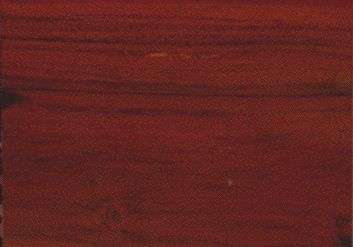
Acha (Hardwickia binata)
Family: Leguminosae
Common names: Acha, Alti, Aryan, Bone, Chhota dundhera, Eppa, Kamra, Karacha, Karachi, Karachu, Katt-udugu, Malaithi, Nar yepi, Narayepi, Parsed, Parsid, Ura, Yapa, Yepi
Distributed in: India (Oceania and S.E. Asia)
Common uses: Agricultural implements, Bearings & bushings, Boat building (general), Bridge construction, Cabinetmaking, Charcoal, Fuelwood, Furniture, Handles: woodworking tools, Heavy construction, Light construction, Mine timbers, Plywood, Poles, Posts, Railroad ties, Structural work, Tool handles, Turnery, Wheel spokes
Tree size: Trunk diameter is 100-150 cm
Colors: the heart isRed, Yellowand the sapwoodWhite to yellow, Yellow.The grain isStraight, the textureMedium to coarseand the lusterDull
Natural durability: Perishable, Very durable
Drying Defects: Slight surface checking, Splitting
Ease of Drying: Moderately Difficult to Difficult
Tree Identification: Bole/stem form is cylindrical
Comments: General finishing qualities are rated as good
Cutting Resistance: Easy to saw
Mortising: Fairly Easy to Very Easy
Moulding: Fairly Easy to Very Easy
Movement in Service: Fairly Easy to Very Easy
Planing: Planes well, to a good finish
Resistance to Impregnation: Heartwood is extremely resistant
Response to hand tools: Easy to Work
- Numerical data Metric
- Numerical data English
- Strength properties
- References
 |
 |
 |
 |
| Item |
Green |
Dry |
Metric |
| Specific Gravity |
|
|
|
| Density |
|
929 |
kg/m3 |
| Bending Strength |
542 |
849 |
kg/cm2 |
| Crushing Strength |
380 |
574 |
kg/cm2 |
| Hardness |
|
|
kg |
| Impact Strength |
|
86 |
cm |
| Shearing Strength |
|
|
kg/cm2 |
| Stiffness |
83 |
97 |
1000 kg/cm2 |
| Tangential Shrinkage |
4 |
|
% |
| Radial Shrinkage |
3 |
|
% |
| Weight |
913 |
737 |
kg/m3 |
| Maximum Load |
|
|
cm-kg/cm3 |
| Toughness |
|
|
cm-kg |
| Static Bending |
|
|
kg/cm2 |
|
 |  |  |  | | Item | Green | Dry | English | | Bending Strength | 7711 | 12078 | psi | | Density | | 58 | lbs/ft3 | | Impact Strength | | 34 | inches | | Maximum Crushing Strength | 5408 | 8171 | psi | | Stiffness | 1188 | 1383 | 1000 psi | | Weight | 57 | 46 | lbs/ft3 | | Radial Shrinkage | 3 | | % | | Tangential Shrinkage | 4 | | % | | Volumetric Shrinkage | 8 | | % | |
Density (dry weight) = 61-67 lbs/cu. ft
Density (dry weight) = 53-60 lbs/cu. ft
Toughness-Hammer drop (Impact Strength) = medium
Toughness-Hammer drop (Impact Strength) = low
Shrinkage, Volumetric = small
Shrinkage, Tangential = very small
Shrinkage, Radial = small
Modulus of Elasticity (stiffness) = very low
Modulus of Elasticity (stiffness) = low
Max. crushing strength = medium
Max. crushing strength = high
Bending strength (MOR) = medium
Bending strength (MOR) = low
Brown, W.H.,1978,Timbers of the World, No. 3 Southern Asia,TRADA, Red Booklet SeriesGamble, J.S.,1902,A Manual of Indian Timbers,Sampson Low, Marston & Co. LondonHoward, A.L.,1948,A Manual of Timbers of the World.,Macmillan & Co. Ltd. London 3rd ed.Krishna Murthy, A.V.R.G.,1967,Economics on railway sleeper supplies in Karimnagar (East) Divn., Andhra,Pradesh.,Indian Forester 93(7) pp455-68Pearson, R.S., Brown, H.P.,1932,Commercial Timbers of India,Govt. Printer Calcutta,2 volsRamesh, Rao K., Purkayastha, S.K.,1972,Indian Woods - Their Identification Properties and Uses,Dehra Dun India,Vol. 3Sweet, C.V.,1922,Further experiments in the air-seasoning of Indian timbers and general,recommendations as to seasoning methods.,Indian Forest Records IX part V, Delhi, IndiaTewari, M.C., Jain, J.C.,1980,Utilization of Secondary Species,Journal of the National Building Organization 25(2) pp1-6
|








